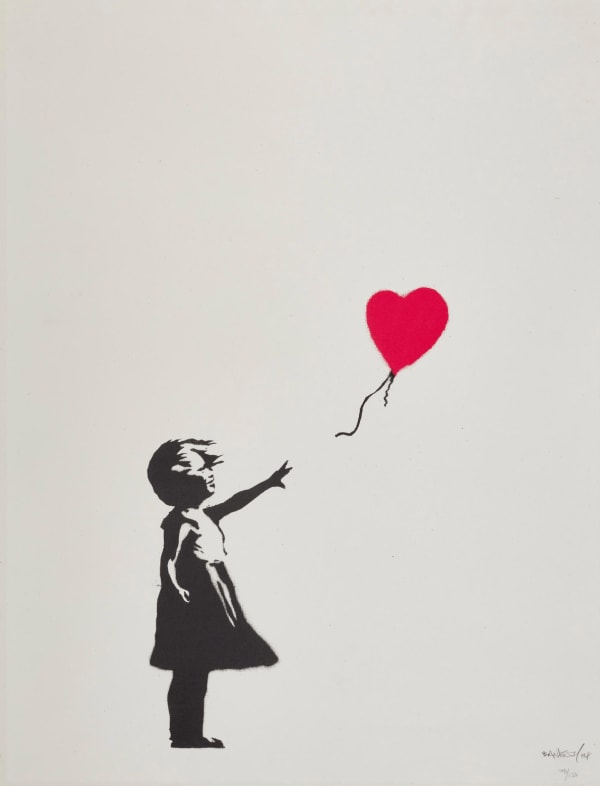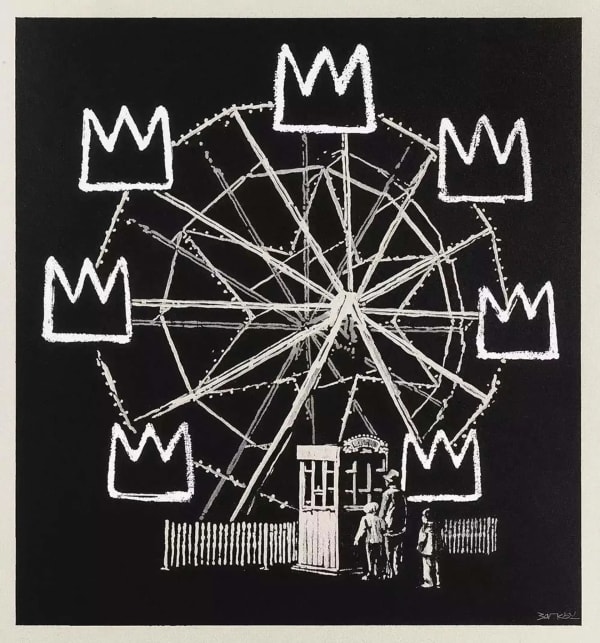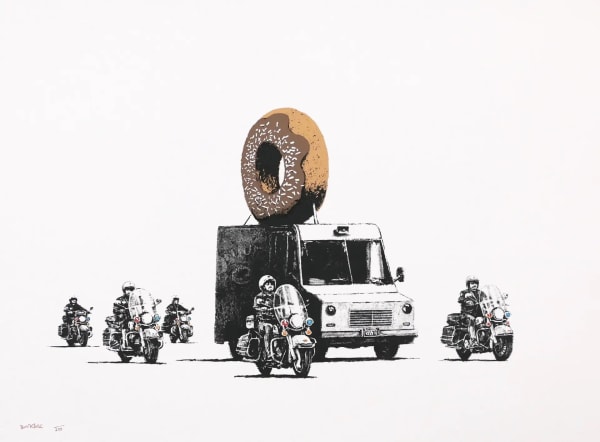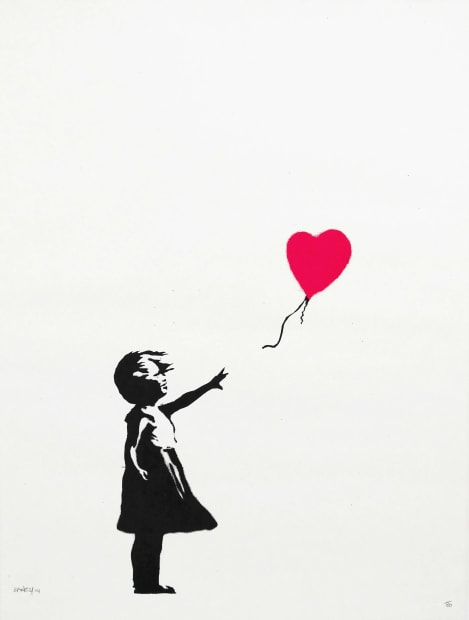Banksy is the original Street Superstar who not only reshaped the visual language of urban intervention but also crossed into the highest tiers of the global art market and institutional collecting. All without abandoning the anonymity, political edge, or guerrilla sensibility that defines his practice. This tension between his anti-establishment messaging and his extraordinary commercial success has become part of the mythology that fuels his influence.
Banksy has forged a visual voice that was instantly readable: punchy, humorous, critical, and often devastatingly direct. His images—Girl with Balloon, Laugh Now, NOLA, Toxic Mary, Flower Thrower—operate like cultural shorthand. They circulate globally because they are built on clarity and wit, yet they also carry political weight, addressing themes such as state surveillance, conflict, capitalism, and social inequality. This duality—immediacy combined with depth—has allowed Banksy to command an audience far beyond the street.
Private collectors, from seasoned blue-chip buyers to new entrants seeking culturally resonant works, have driven sustained demand for both his editions and unique pieces. The market has continued to validate him through exceptional auction results, with record prices demonstrating that his relevance extends well beyond the novelty of stencilled walls.
Above all, Banksy’s rise reflects a shift in what constitutes cultural legitimacy. The boundary between street art and fine art has dissolved, and Banksy stands at that intersection as both provocateur and icon—an artist whose imagery, ideas, and market presence have fully transcended their origins on city walls.












